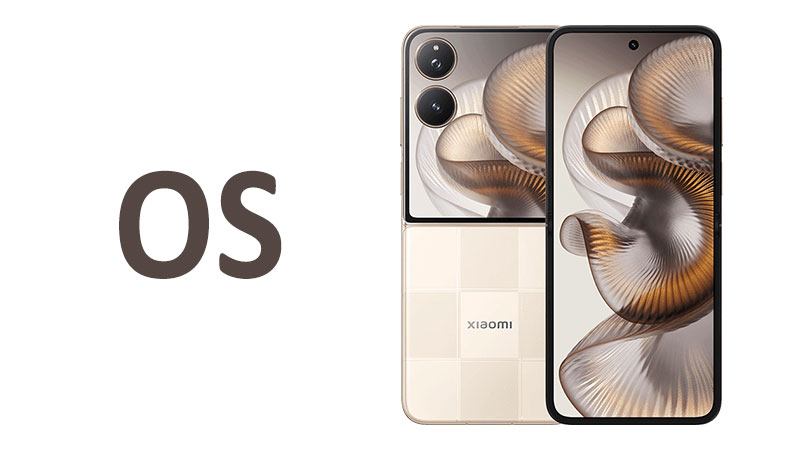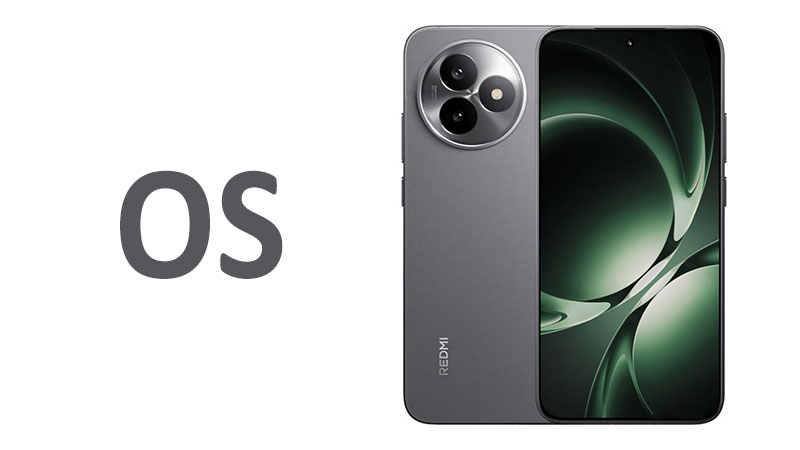The operating system is the soul of any smartphone. It dictates everything from the user interface to the long-term performance and security of the device. For enthusiasts and everyday users, understanding the software is as crucial as knowing the hardware specifications. This is particularly true for the Xiaomi Redmi 15 OS, which promises a powerful combination of the latest Android version and Xiaomi’s custom software. This article provides a comprehensive and detailed analysis of the software powering the Xiaomi Redmi 15, exploring its core features, performance, and what it means for your daily mobile experience. We will delve into Android 15’s foundational improvements and Xiaomi’s innovative HyperOS 2, offering a complete picture for anyone considering this new device.
Android 15 on the Xiaomi Redmi 15
The Xiaomi Redmi 15 is one of the first devices to ship with Android 15 out of the box, a significant advantage over many competitors. This latest version of Android brings a host of under-the-hood improvements that form the backbone of the Redmi 15’s performance. Android 15 focuses heavily on privacy, security, and efficiency.
One of the key updates in Android 15 is improved app sandboxing. This makes it more difficult for malicious apps to access sensitive data. Users also benefit from enhanced privacy controls, giving them more granular power over what apps can see and do. The system-level optimizations also contribute to better battery life and smoother overall performance, especially during multitasking.
Comparison with Android 14: While Android 14 was a solid iteration, Android 15 introduces more refined and substantial updates. The most noticeable difference is the improved thermal management, which helps the Redmi 15 stay cool under load. Android 15 also brings better support for new hardware features, such as advanced camera sensors and display technologies, which the Redmi 15 leverages to its full potential.
The Custom Skin: Xiaomi’s HyperOS 2
Layered on top of Android 15 is Xiaomi’s HyperOS 2. This is a brand new version of the company’s custom interface, a successor to the popular MIUI. HyperOS 2 is not just a visual redesign; it is a fundamental shift in Xiaomi’s software strategy, aiming for a unified ecosystem across its devices. It is designed to be lighter, faster, and more integrated than its predecessors.
The user interface of HyperOS 2 feels familiar to those who have used previous Xiaomi devices, but it’s more polished. The icons are more refined, the animations are smoother, and the overall design is cleaner. It’s a noticeable step up in aesthetic quality and user experience.
Key Features of the Xiaomi Redmi 15 OS
The integration of Android 15 and HyperOS 2 on the Xiaomi Redmi 15 brings a powerful suite of features. These features are designed to enhance productivity, creativity, and the overall user experience.
AI-Powered Enhancements
Artificial intelligence is a central theme in the Redmi 15 OS. Xiaomi has integrated AI across various parts of the system. This includes AI Erase, which allows users to remove unwanted objects from photos effortlessly. There is also AI Sky, a feature that intelligently adjusts and enhances the sky in photographs for a more dramatic effect.
The device also supports deep integration with Google Gemini, allowing users to perform complex tasks and have natural conversations with the AI assistant. This functionality extends beyond simple queries, enabling a more interactive and helpful experience. These AI tools put creative power directly in the hands of the user, making advanced editing accessible to everyone.
Seamless Interconnectivity
HyperOS 2 is built with the modern multi-device user in mind. The OS offers Xiaomi Interconnectivity, which creates a seamless link between the Redmi 15 and other Xiaomi devices. Features like Call Sync and Shared Clipboard allow you to start a task on one device and seamlessly continue it on another. For example, you can copy a text from your Redmi 15 and paste it directly onto a Xiaomi tablet or laptop. This creates a cohesive and fluid ecosystem, greatly boosting productivity.
Performance and Efficiency
HyperOS 2, combined with Android 15’s core optimizations, results in a highly efficient and responsive system. Xiaomi claims a “48-month like-new software experience,” which suggests a commitment to long-term performance. The software is optimized to reduce system resource consumption, ensuring that even with a heavy workload, the device remains fast and responsive. The new Smart Charging Engine 2.0 also works to protect the Redmi 15’s massive 7,000mAh battery, extending its lifespan.
User Experience and Customization
HyperOS 2 offers a high degree of customization. Users can personalize their home screen with various widgets and layouts. The device comes with an app drawer enabled by default, but it can be easily disabled for a more traditional home screen layout. There is also a “light” UX option that increases icon sizes and simplifies the interface, making it more accessible for older users or those who prefer a minimalist design.
The system also includes a range of tools and settings to fine-tune the experience. You can manage notification settings with great detail, ensuring you only receive alerts from the apps that matter most.
Pros and Cons of the Xiaomi Redmi 15 OS
Every operating system has its strengths and weaknesses. It’s important to consider both when making a purchase decision.
Pros:
- Latest Android Version: Running on Android 15 gives the Redmi 15 a significant edge. It provides access to the newest features, security patches, and performance improvements from Google. This also means a longer support window for future updates.
- AI Integration: The seamless integration of AI features like AI Erase and Google Gemini makes the device more capable and user-friendly, particularly for creative tasks.
- Polished User Interface: HyperOS 2 is a more refined and visually pleasing interface compared to its predecessors. The animations are smooth, and the design is clean, offering an excellent user experience.
- Ecosystem Connectivity: The Xiaomi Interconnectivity features are a huge benefit for users who own multiple Xiaomi devices, creating a truly unified and convenient experience.
- Long-Term Support: Xiaomi’s commitment to a “48-month like-new” experience and a robust update policy is reassuring for long-term ownership. The device is expected to receive two years of OS updates and four years of security patches, a significant improvement for the Redmi series.
Cons:
- Bloatware: Like many Xiaomi devices, the Redmi 15 comes with a number of pre-installed applications, often referred to as bloatware. While many can be uninstalled, some system apps are permanent and may include advertisements, which can be an annoyance for some users.
- Learning Curve: Users coming from a stock Android experience or other UIs might find HyperOS 2 to have a slight learning curve. The split notification and control centers are different from the standard Android layout.
- System Notifications: Some users have reported that system apps can be overly aggressive with notifications, although these can often be managed through the settings.
Comparison with Competitors
To fully appreciate the Redmi 15 OS, it is useful to compare it with the software on rival phones in a similar price segment.
- vs. Samsung Galaxy A56 (Android 15 with One UI): Samsung’s One UI is another highly customized Android skin. It is known for its clean design and deep integration with Samsung’s ecosystem. The key difference lies in the ecosystem. While Samsung has its own suite of apps and services, HyperOS 2 aims for a broader, more interconnected device ecosystem with Xiaomi’s smart home products. The Redmi 15’s AI features are also more heavily advertised and integrated into the core experience.
- vs. Google Pixel 9 (Stock Android 15): The Pixel series offers the purest Android experience, with no custom skin. The main advantage of a Pixel is immediate access to Android updates. However, the Redmi 15’s HyperOS 2 offers a much more feature-rich and customizable experience out of the box. While Pixel’s AI features are top-notch, Xiaomi’s AI tools are more geared towards creative and productivity tasks, giving users a different kind of powerful toolset.
Important Points for Buyers
For a prospective buyer, the Redmi 15 OS offers a compelling package. The combination of the latest Android version and Xiaomi’s polished HyperOS 2 means you get a modern, secure, and feature-rich experience. The AI tools are a major selling point, making everyday tasks easier and more enjoyable. The promise of long-term software support is a significant factor, ensuring your phone remains secure and up-to-date for years.
The few downsides, such as bloatware, are manageable. Most pre-installed apps can be removed, and system notifications can be tamed in the settings. The user interface, though different from stock Android, is intuitive and easy to get used to. Ultimately, the Redmi 15 OS is a testament to Xiaomi’s commitment to delivering a high-quality software experience that complements its impressive hardware.
Conclusion
The Xiaomi Redmi 15 OS, powered by Android 15 and HyperOS 2, is a robust and intelligent software platform. It represents a major step forward for Xiaomi, offering a more refined, connected, and AI-driven user experience. The system is fast, efficient, and packed with features that enhance both productivity and creativity. While the presence of bloatware might be a minor drawback for some, the overall package is incredibly strong. With a commitment to long-term updates and a cohesive ecosystem, the Xiaomi Redmi 15 is not just a hardware powerhouse; it is a software-first device designed for the modern user. For anyone in the market for a new smartphone, the Redmi 15’s software is a compelling reason to consider this device.
FAQ
The Xiaomi Redmi 15 runs on Android 15, the latest version of the Android operating system.
HyperOS 2 is Xiaomi’s new custom operating system that is more lightweight, more integrated, and more focused on a unified ecosystem than its predecessor, MIUI.
Yes, the phone comes with some pre-installed apps (bloatware), and some system apps may display ads. However, most of the unwanted apps can be uninstalled.
Xiaomi has promised two years of major Android OS updates and four years of security patches for the Redmi 15.
The main AI features include AI Erase for removing objects from photos, AI Sky for enhancing sky in images, and deep integration with Google Gemini for a more powerful AI assistant.



